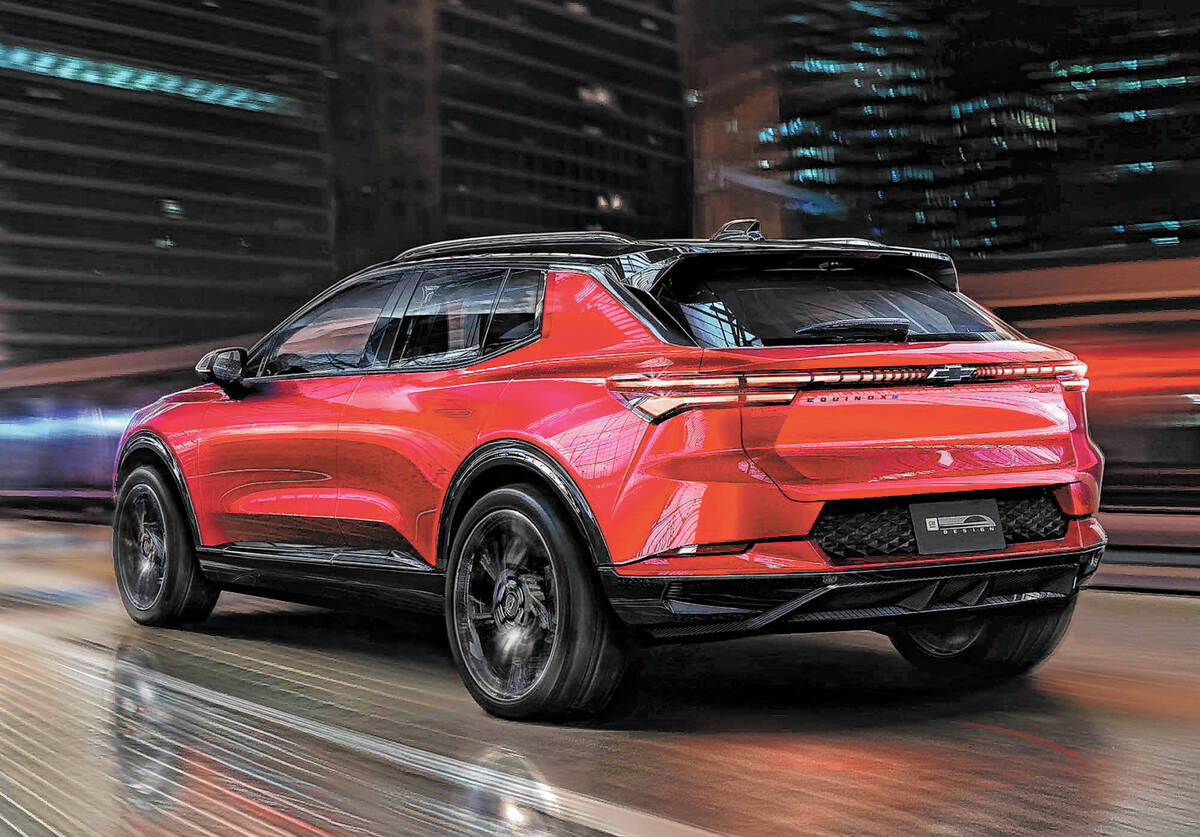For this vehicle and others, visit Findlay Automotive Group’s expansive inventory here.
The number of electric vehicle models in General Motor’s lineup continues to grow with the launch of the five-passenger Chevrolet Equinox EV this fall.
Attaching the Equinox name to this EV, which is smaller than the Blazer EV but larger than the Bolt, should give the vehicle a sense of familiarity with buyers, although the design and propulsion systems are night-and-day different.
How divergent are they? First, the Equinox EV is considerably more stylish than its gasoline sibling, which remains on offer at least through the 2024 model year. The EV’s front end has an aerodynamic appearance, as does the sweptback roofline and rear deck.
The Equinox EV is also significantly longer — by more than 7 inches — and the distance between the front and rear wheels is greater by about 9 inches, which provides more rear-seat legroom.
The EV’s minor drawback is its cargo capacity with the rear seatback folded forward, which is about 10 percent less than the gasoline Equinox’s volume. That’s mainly due to the EV’s lower roofline. Also, unlike some other EVs, there’s no front storage spot beneath the hood, commonly referred to as a frunk.
The cabin is notable for its 11-inch digital driver information screen positioned alongside a standard 11-inch or available 17-7-inch infotainment screen. As well, the shifter that controls the single-speed transmission is located on the steering column, which creates a small storage area on the center console.
As with the automaker’s other EVs (except the Bolt), the Equinox uses GM’s Ultium platform that supports both front- and all-wheel drive. The large battery pack is located beneath the floor.
The front-wheel-drive (single-motor) Equinox EV is rated at 210 horsepower and 242 pound-feet of torque. For AWD models (with front and rear motors), that increases to 290/346.
Maximum range varies between 250 and 300 miles depending on battery capacity and trim level.
GM prefers to use charge rate as opposed to time. When hooked to a 240-volt Level 2 station, the EV charges at a rate that adds 34 miles of range per hour. On higher trims, the EV charges faster: at a rate of 51 miles of range per hour. When hooked up to a DC fast charger, the rate is 70 miles in 10 minutes, according to the automaker.
Drivers will have access to GM’s Ultium Charging 360 network of 110,000 outlets available throughout the United States and Canada.
The standard regenerative braking system can help extend the EV’s range and can bring the vehicle to a complete stop without the use of the brake pedal.
Base 1LT trim pricing is estimated at $30,000, including destination charges. That’s only about $2,000 more than the base gasoline Equinox LS, making the EV an attractive alternative. Along with the basics, you get a reasonably complete range of active-safety content such as automatic emergency braking, forward collision alert, lane-keeping assist, blind-spot warning and rear cross-traffic braking.
The 2LT gets heated front seats with power-adjustable driver’s chair as well as roof rails and a front LED light bar. The 2RS, which is the first Equinox EV to arrive this fall, comes with unique interior trim, heated flat-bottom steering wheel and 20-inch wheels (19s are standard).
Along with the larger infotainment screen, the 3LT has dual-zone climate control, power liftgate, 360-degree surround-view camera and 21-inch wheels. The top-end 3RS loads up with front and rear heated and ventilated seats and power-adjustable passenger chair.
Among the lengthy list of options is a sunroof, rear-camera mirror, premium Bose audio system and a head-up driver’s display that projects key information onto the windshield.
Also available on all but the base trim level is GM’s semi-autonomous Super Cruise system. It provides hands-free driving over more than 400,000 miles of roads throughout North America.
According to General Motors CEO Mary Barra, the affordably priced Equinox EV represents a “mainstream choice” for new-car buyers. It should certainly put the pressure on competing automakers to offer EVs with similarly appealing content and price tags.








